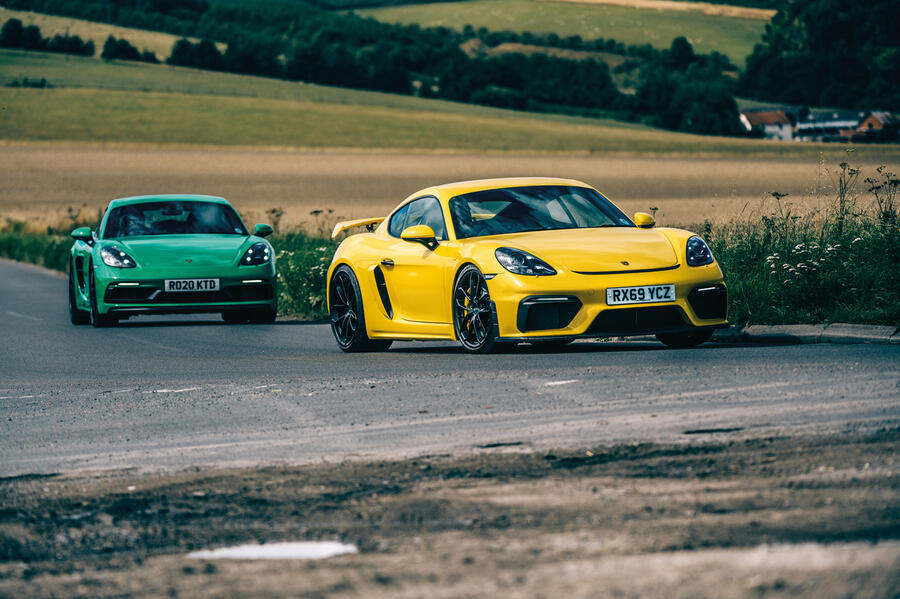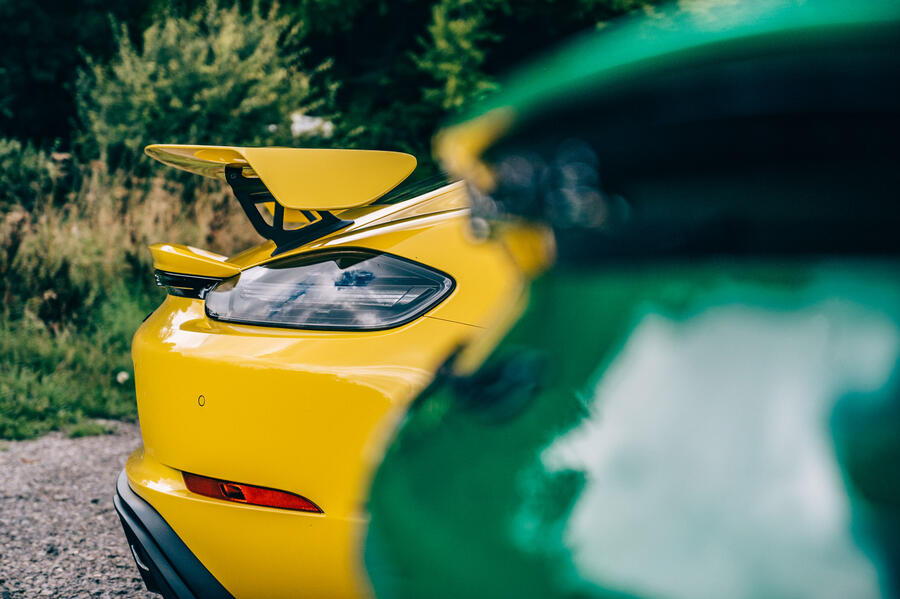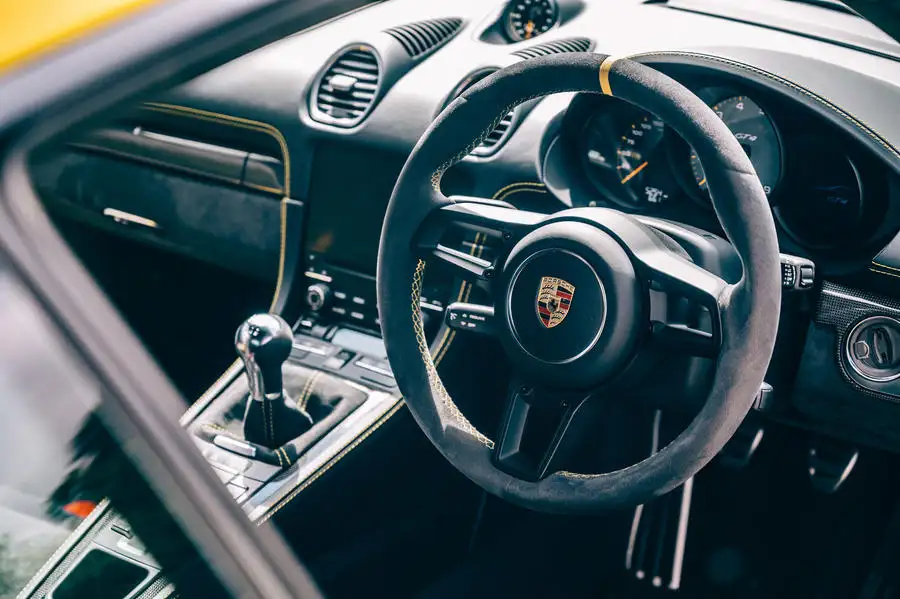We all know that there are Porsches and then there are Porsches. One lot are SUVs, big saloons and electric powerhouses, most (but not all) of which we greatly admire; the others are sports cars to which we have far more emotional connection. But even the sports cars sub-divide into those designed by Porsche itself and those that are the work of its Weissach-based Motorsport department. You will know their names: GT2, GT3 and their Mr Hyde RS alter-egos, GT4 and Spyder. And here’s the thing: however good a standard 911 or 718 may be, it’s always a given that, when it comes to the ultimate driving experience, none can come close to a Motorsport car. Except one just did.
Porsche’s decision to remove the unworthy turbocharged 2.5-litre flat four from the engine bay of the Cayman GTS and replace it with essentially the same 4.0-litre flat six used by the Cayman GT4 has led some to speculate that, on balance and once their £11,000 price differential is taken into account, the GTS might just be – whisper it – the better bet. I know such talk causes palpitations down Weissach way. The reason Motorsport Porsches are so damn good is because they don’t think of Aston Martin, Audi, BMW or Mercedes in terms of opposition; they think of other Porsches.
So, can a stock standard Porsche really put one over a Motorsport car? It’s what we’re here to discover. Some may consider the look of the GT4 and that coveted name are worth the additional money all by themselves, and that before you consider it has GT3 front suspension, inverted dampers at the rear and GT3 control arms. The aero kit not only looks the part but provides modest amounts of extra downforce, too. Don’t be too distracted by our yellow GT4’s racy bucket seats, roll-cage and carbon-ceramic brakes, because these are all among the options that bring its list price to £94,506. The green GTS’s extras are fewer and have little effect on its driving experience. At £74,343, it’s fully £20,000 cheaper than the GT4 as presented here.

But driving it to meet the GT4, it seemed to me the Motorsport car would need to work hard to establish clear conceptual air between itself and its stablemate, not least because when I thought of what could be reasonably improved on the GTS, I drew a blank. As it does in the GT4, the 4.0-litre unit addresses all issues raised by previous engines – both the lack of torque of the earlier normally aspirated ones and the compromised sound and throttle response of the later four-cylinder turbo ones. It even almost makes sense of the long-legged gear ratios. I knew the GT4 would be no worse in this regard, but being as good as the cheaper car wouldn’t be good enough; it needed to find something else.
I also thought it possible that the GT4 could actually lose ground on the public road. Our chosen route is well known to us and used because it’s properly challenging, with broken surfaces, odd cambers and corners with inconsistent radii. What you need here is compliance and, even in the GTS, I found myself stabbing the damper button to make sure the car was as soft as could be. The GT4, on its wider and stickier Michelin Pilot Sport Cup 2 tyres, would doubtless generate more grip, despite being a touch heavier (blame that aero kit), but who needs that much adhesion on a dry road? And in the wet, I’m sure you could press on in the GTS when you would feel far more inclined to start holding back in the GT4.


Add your comment